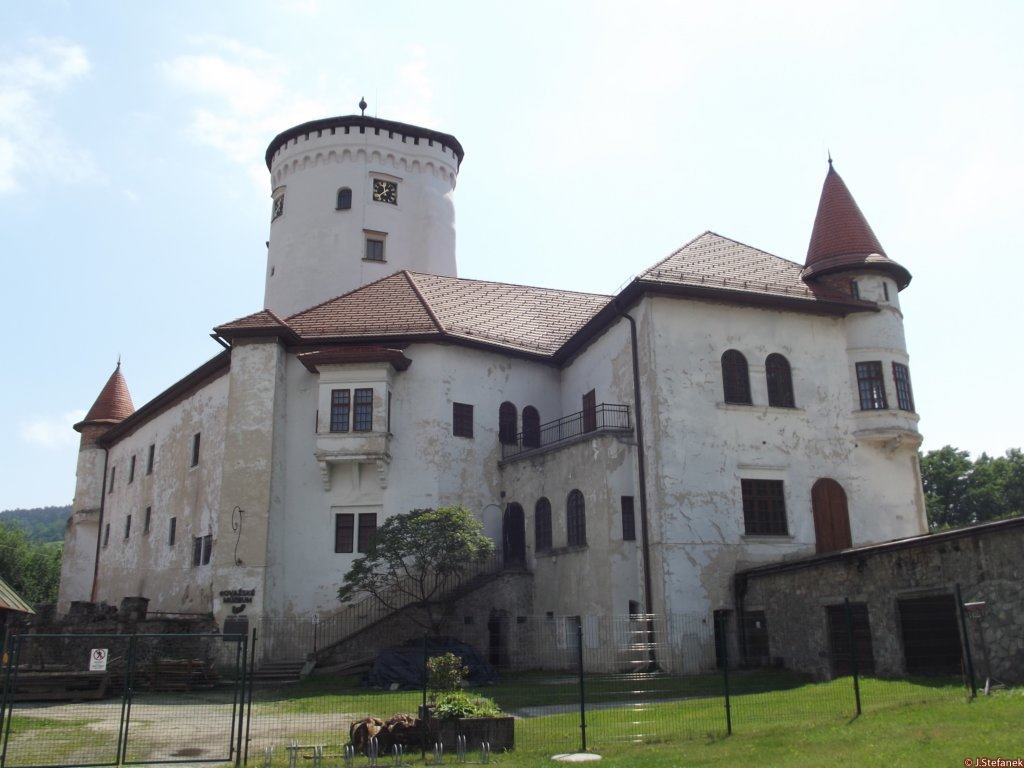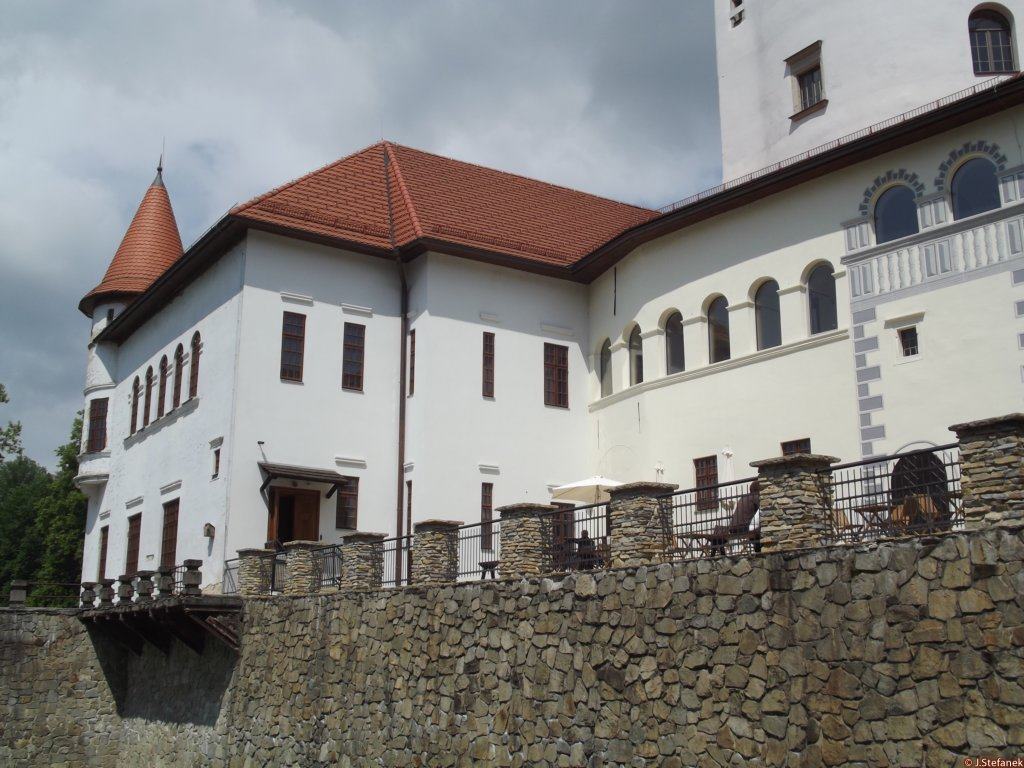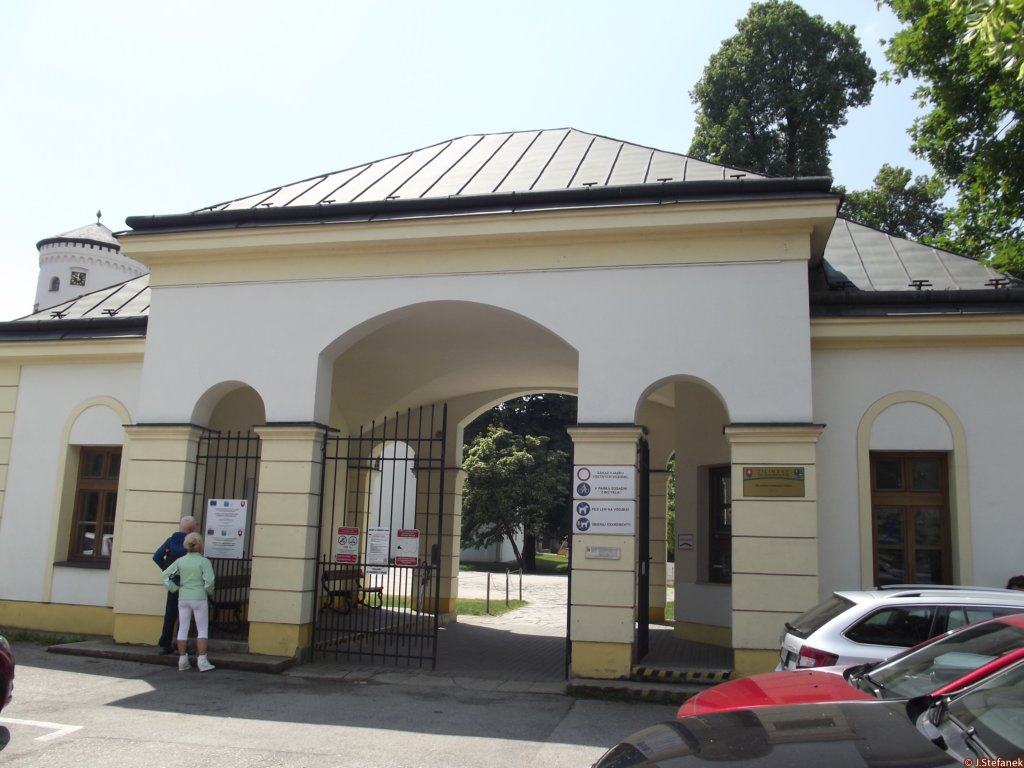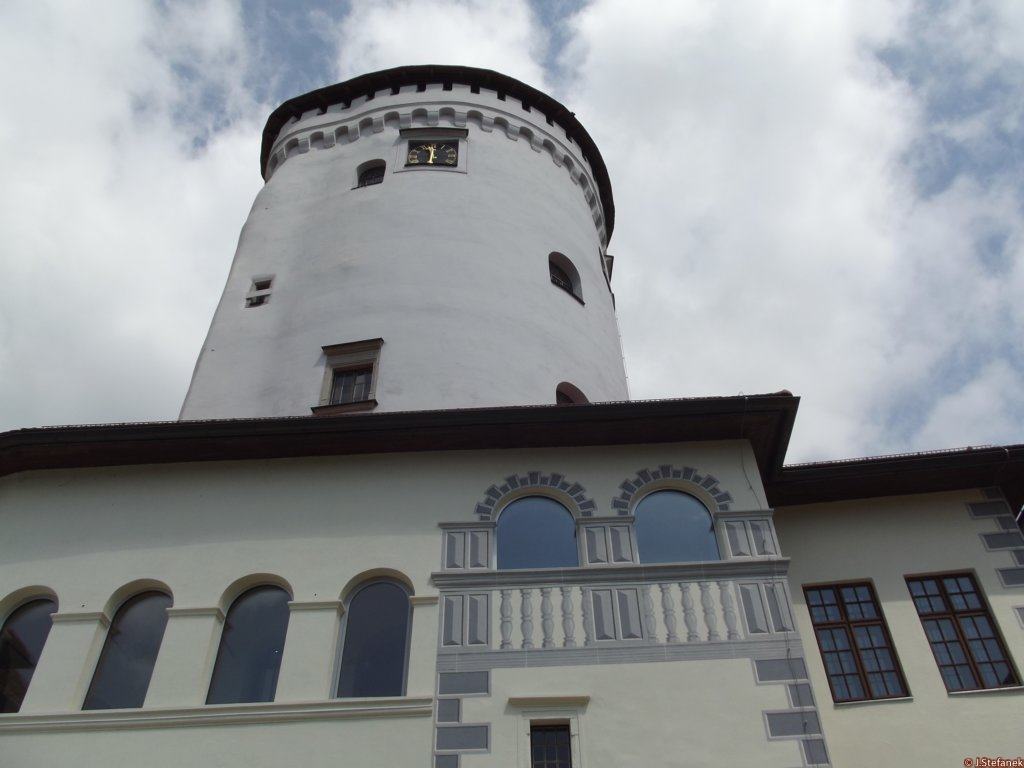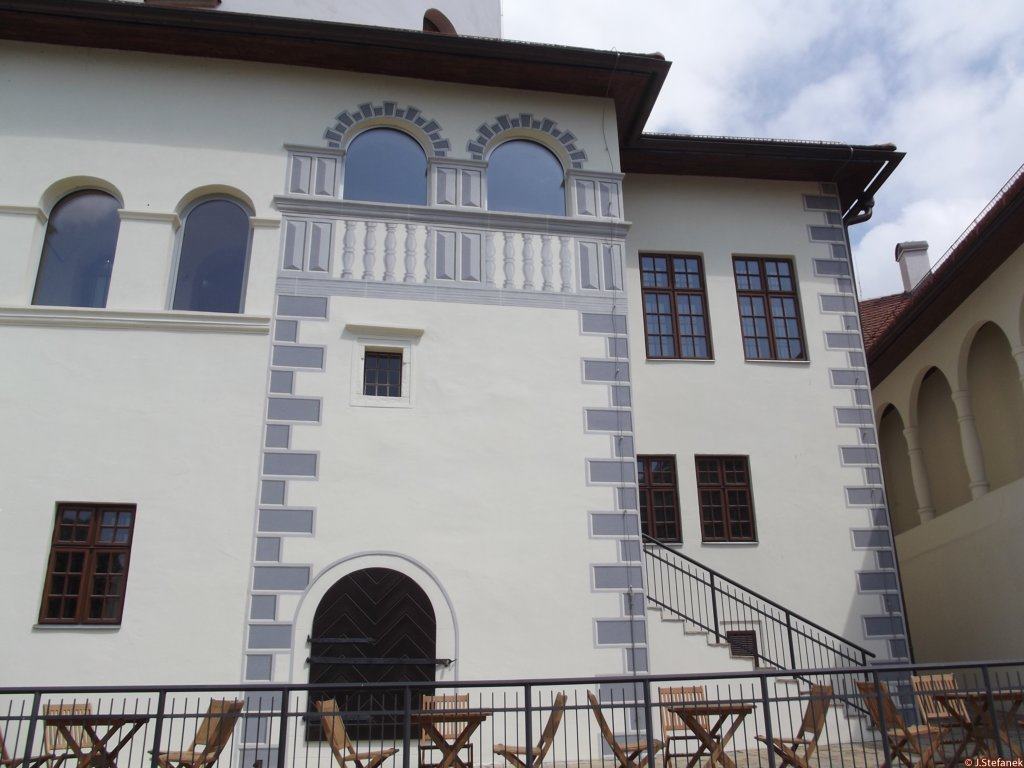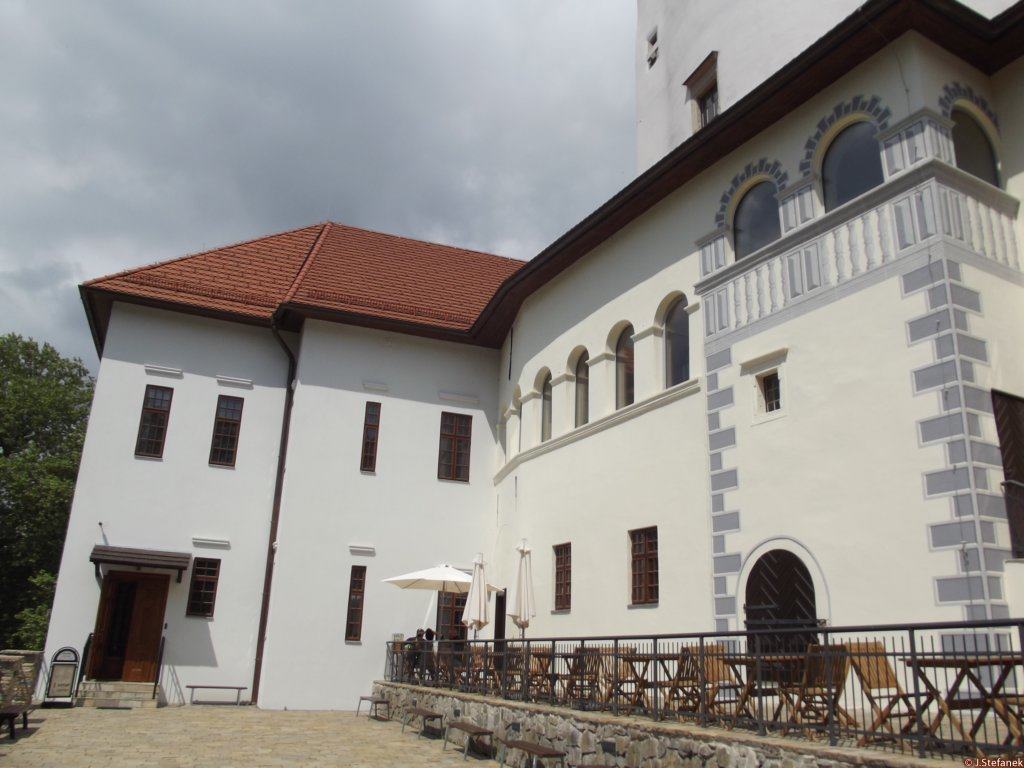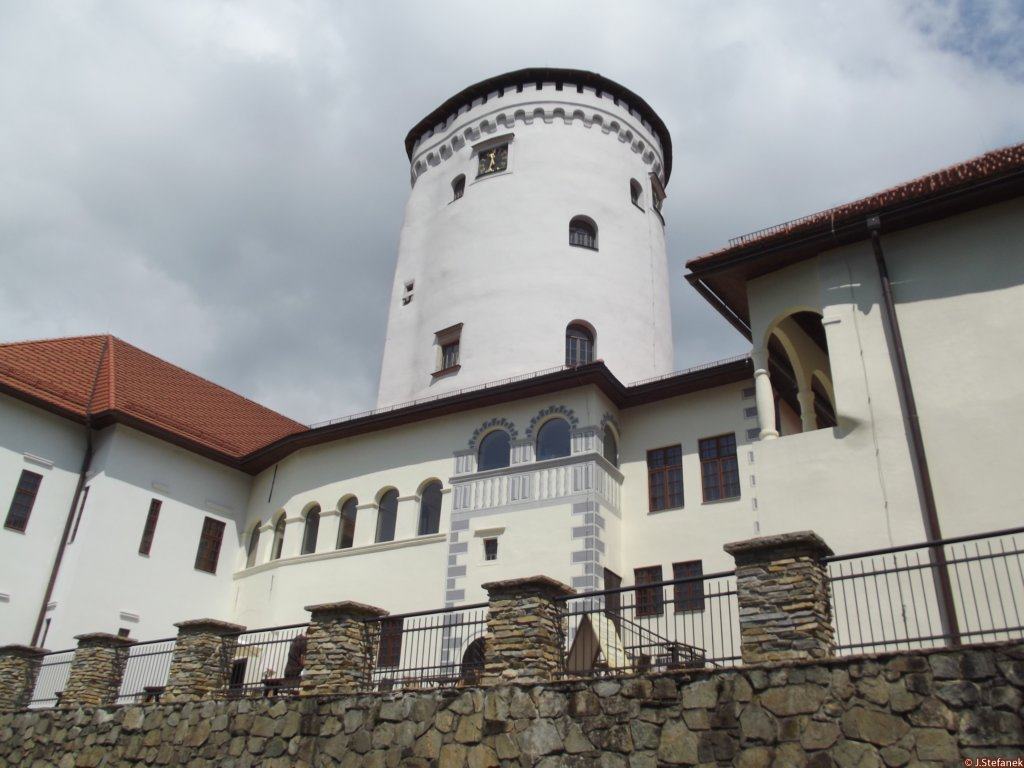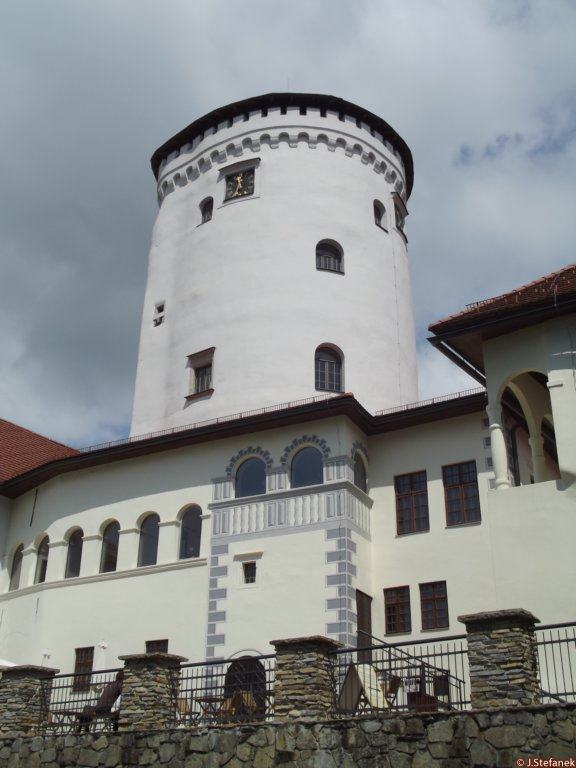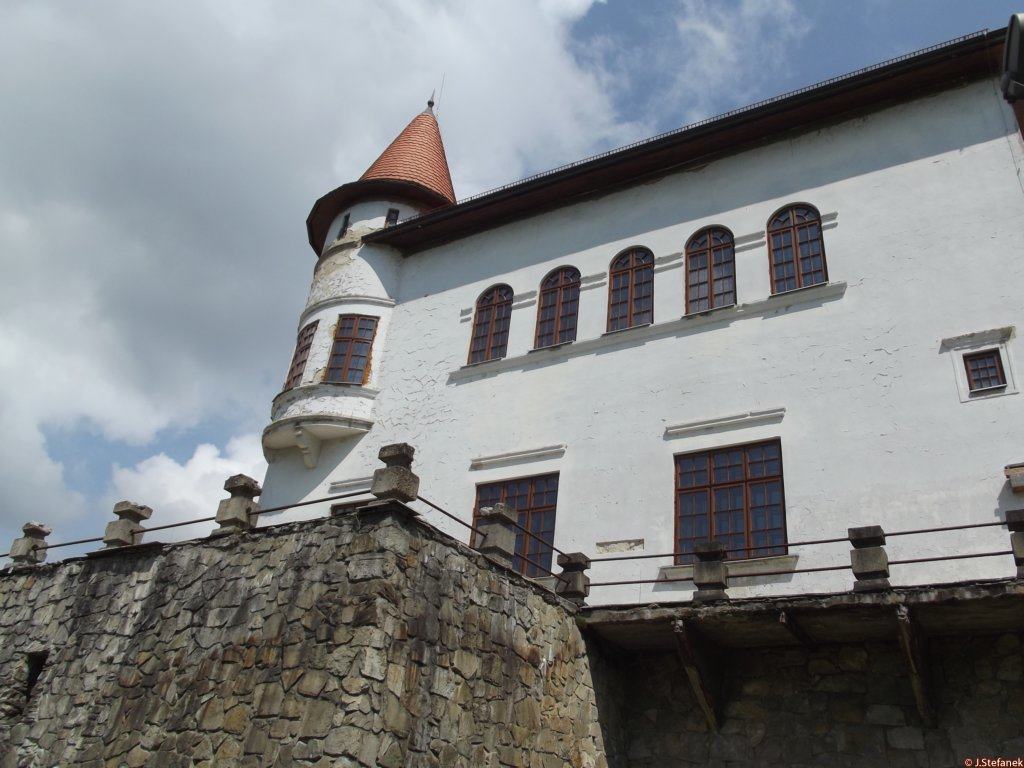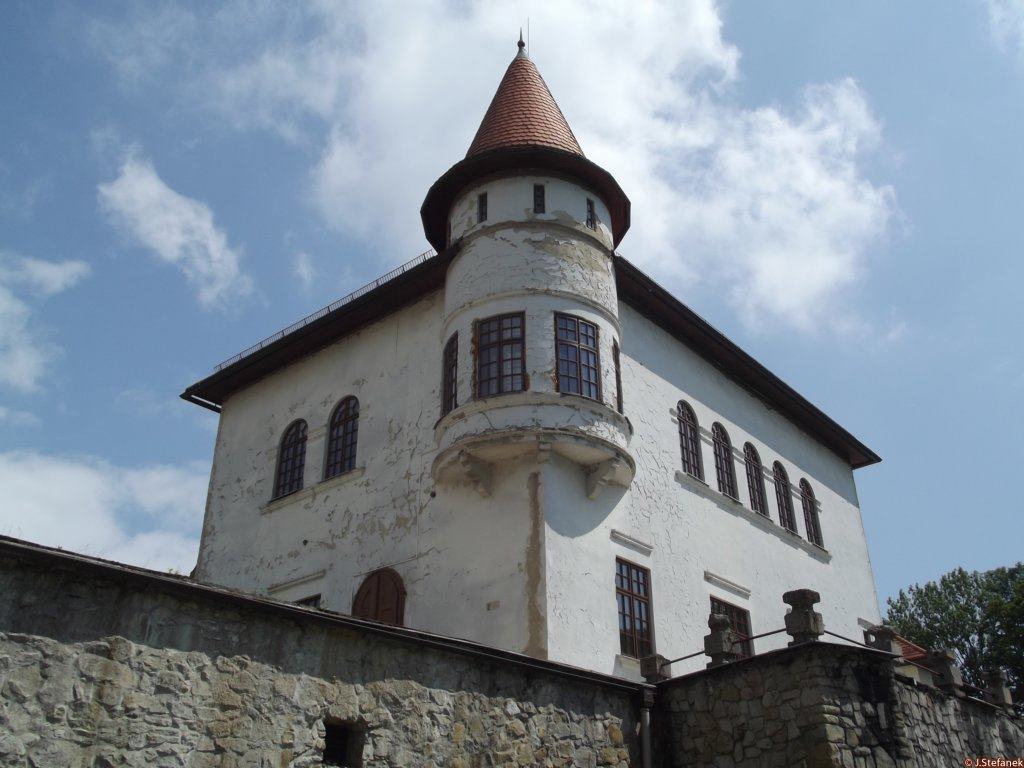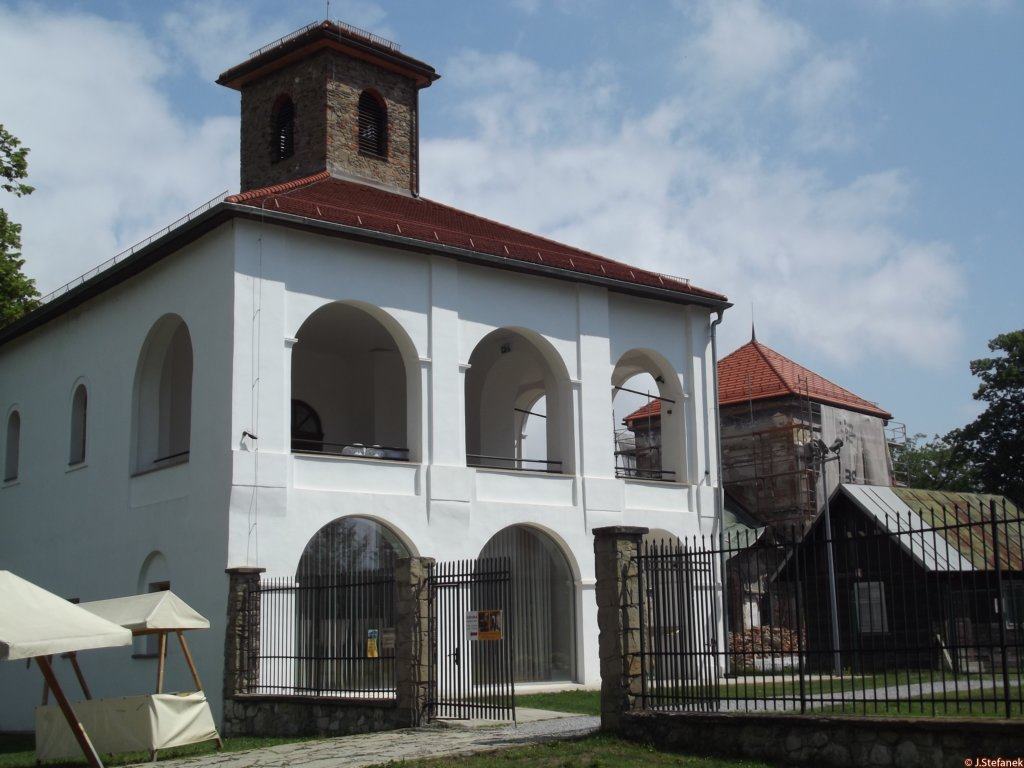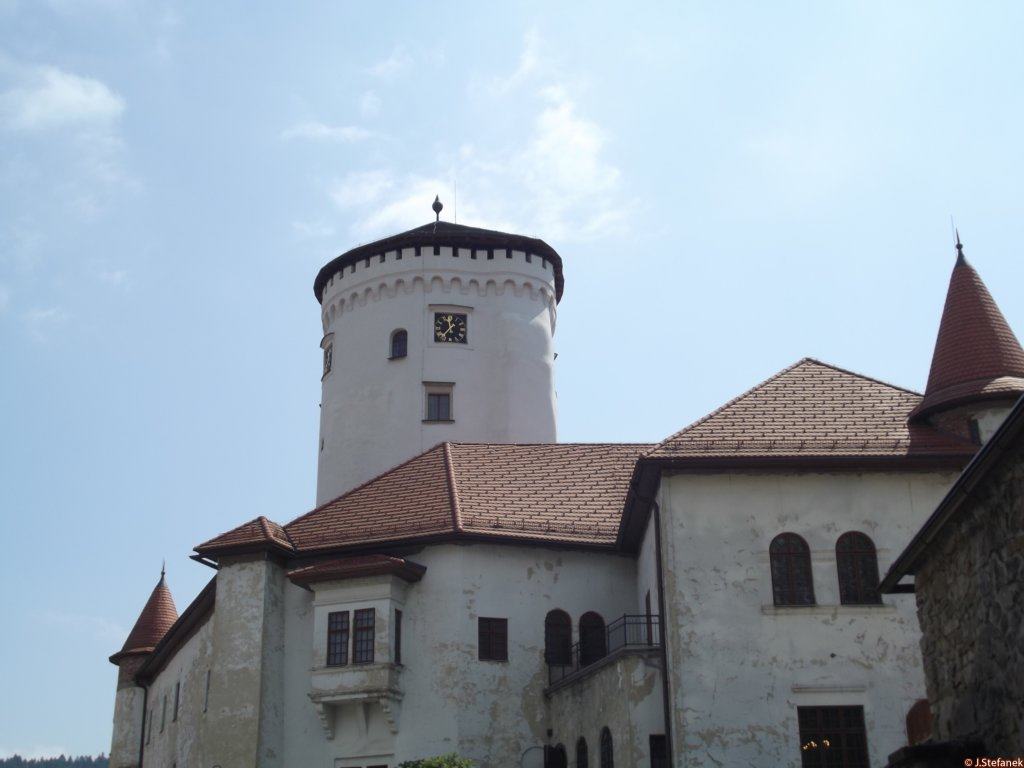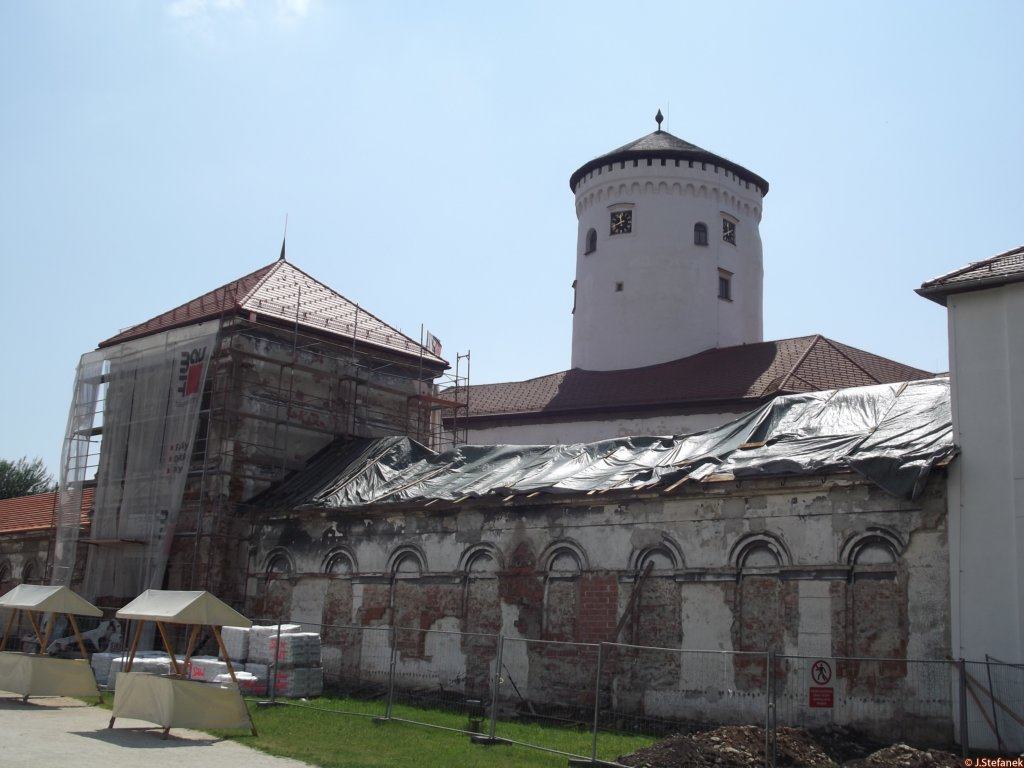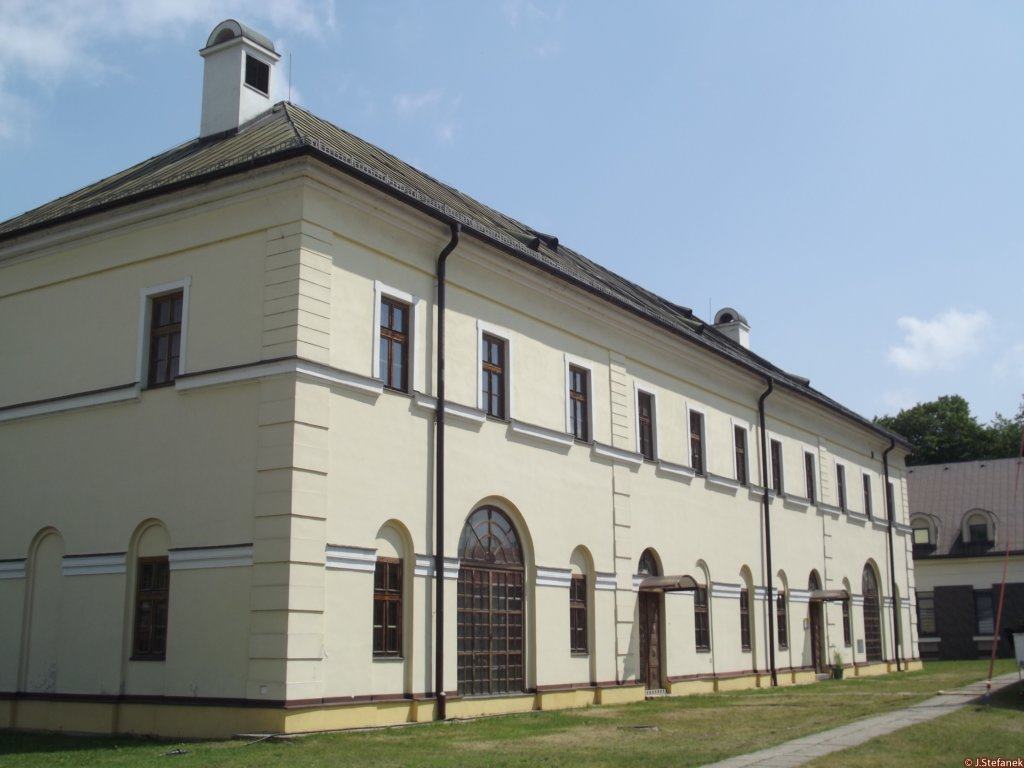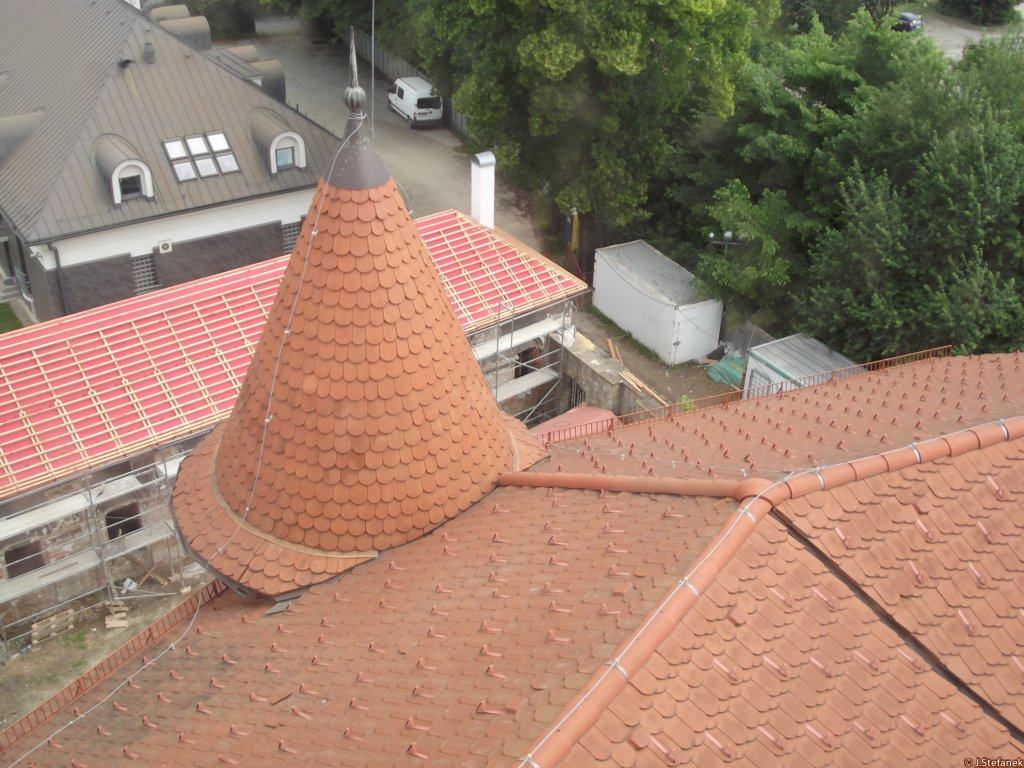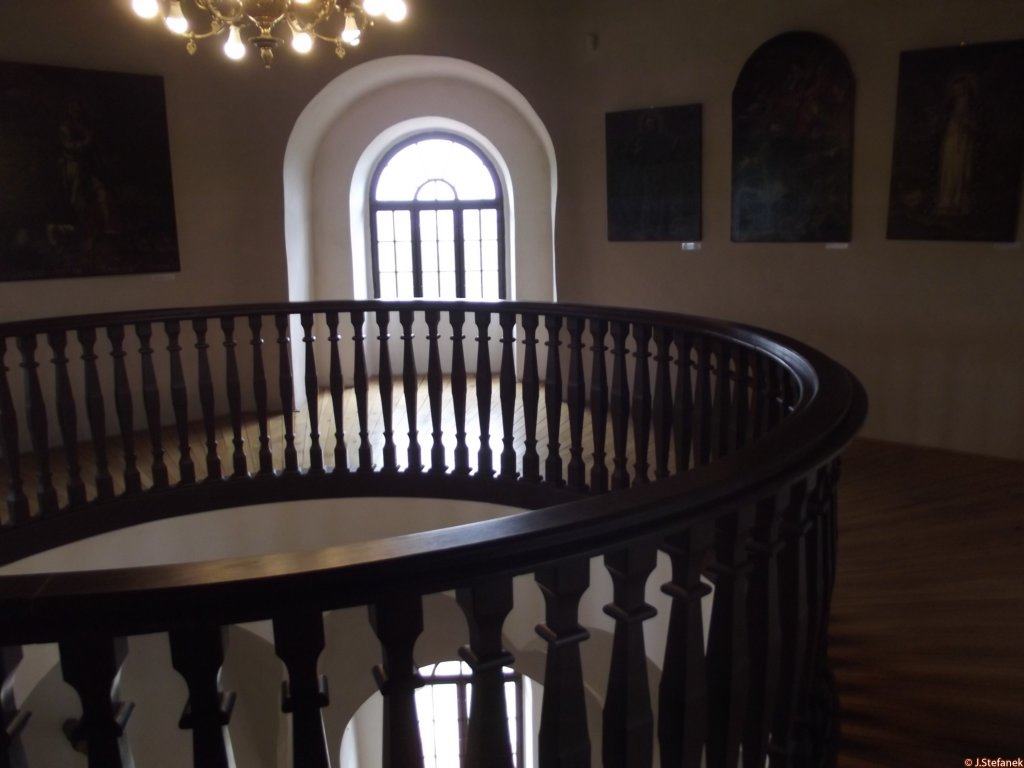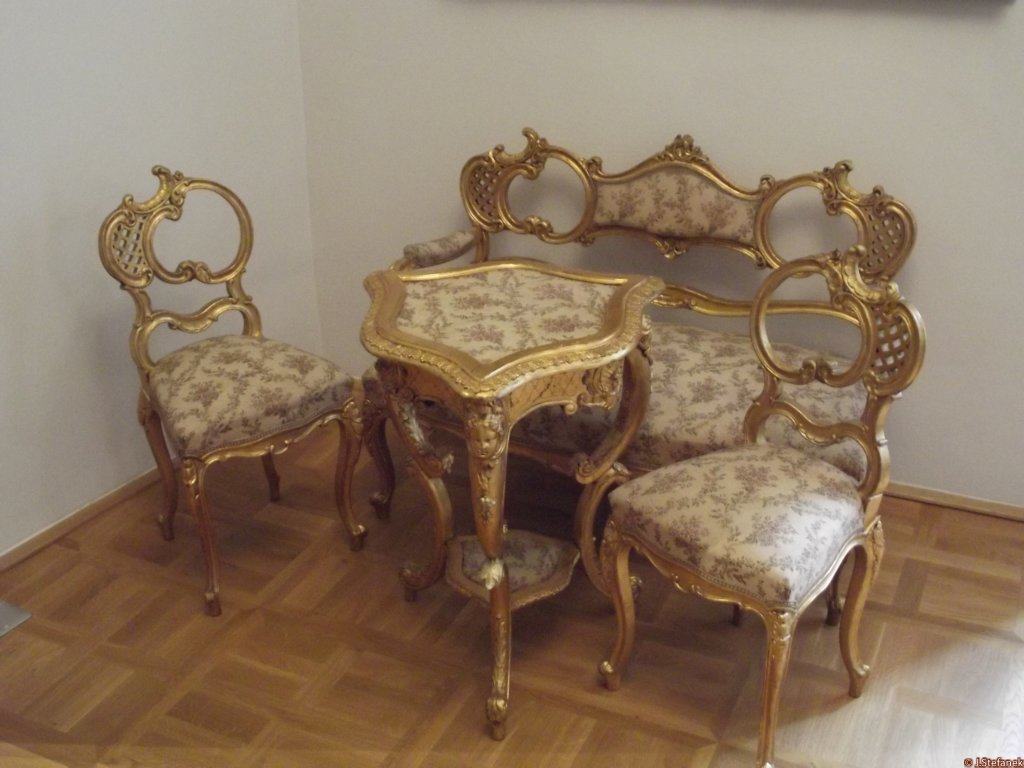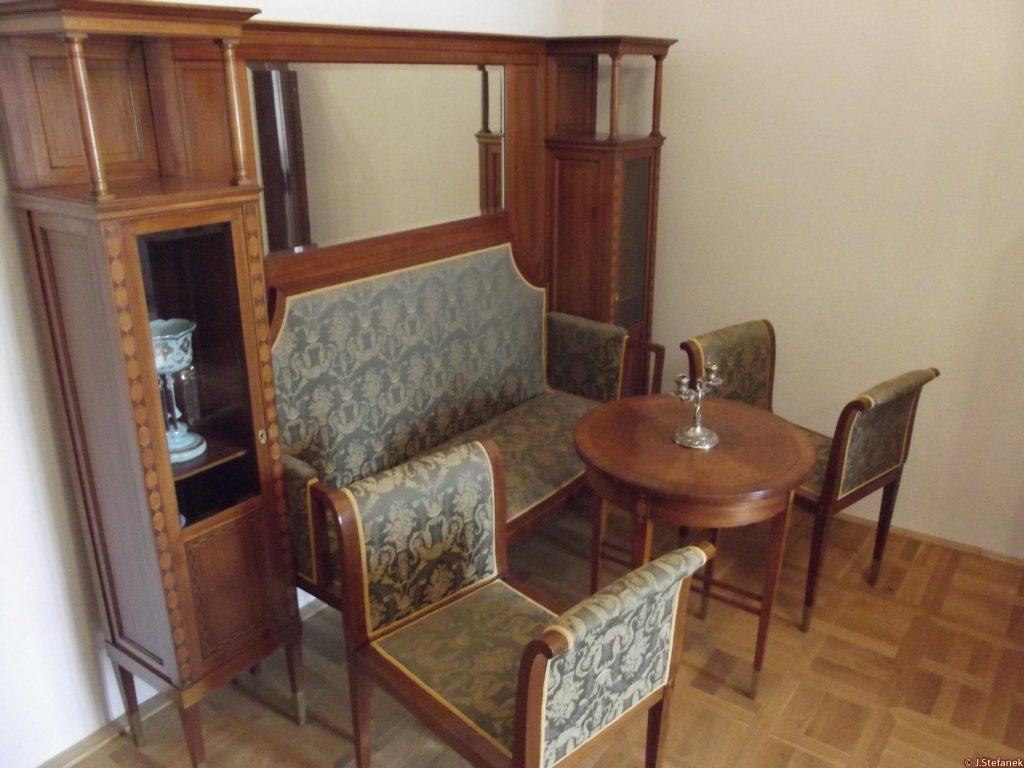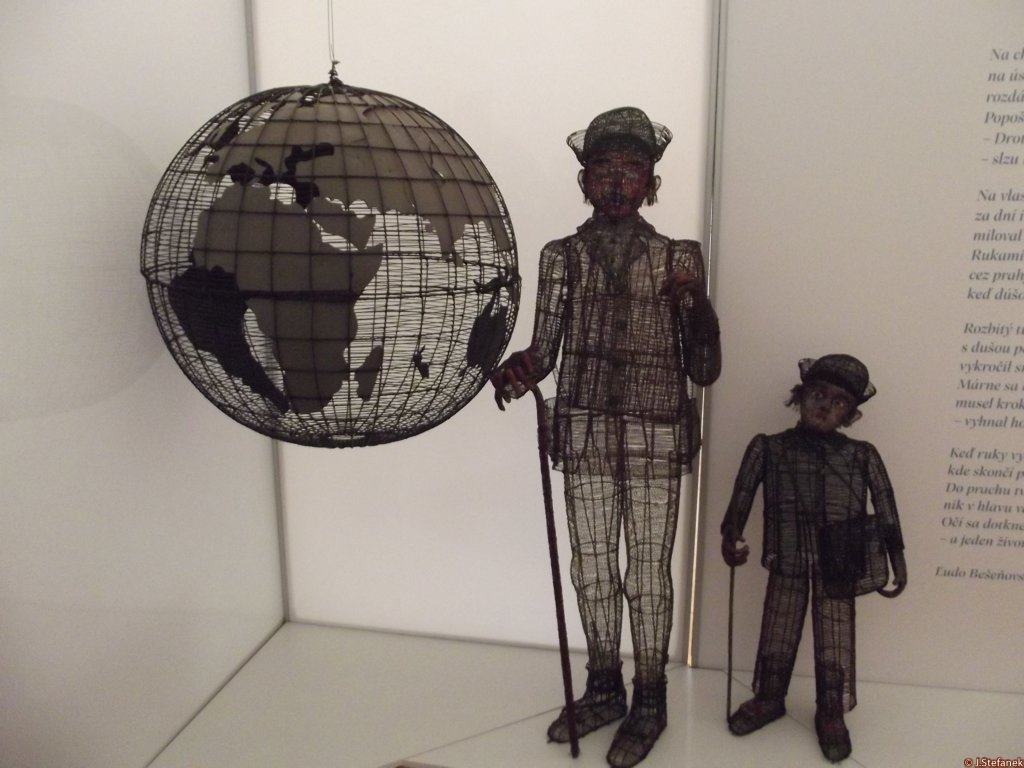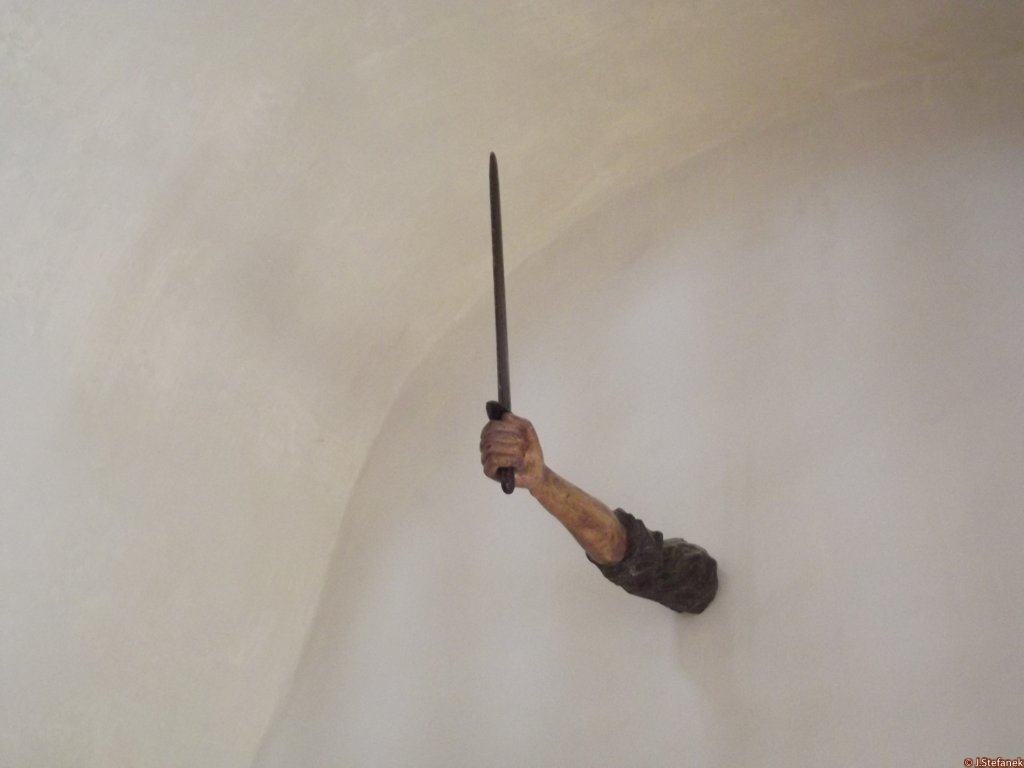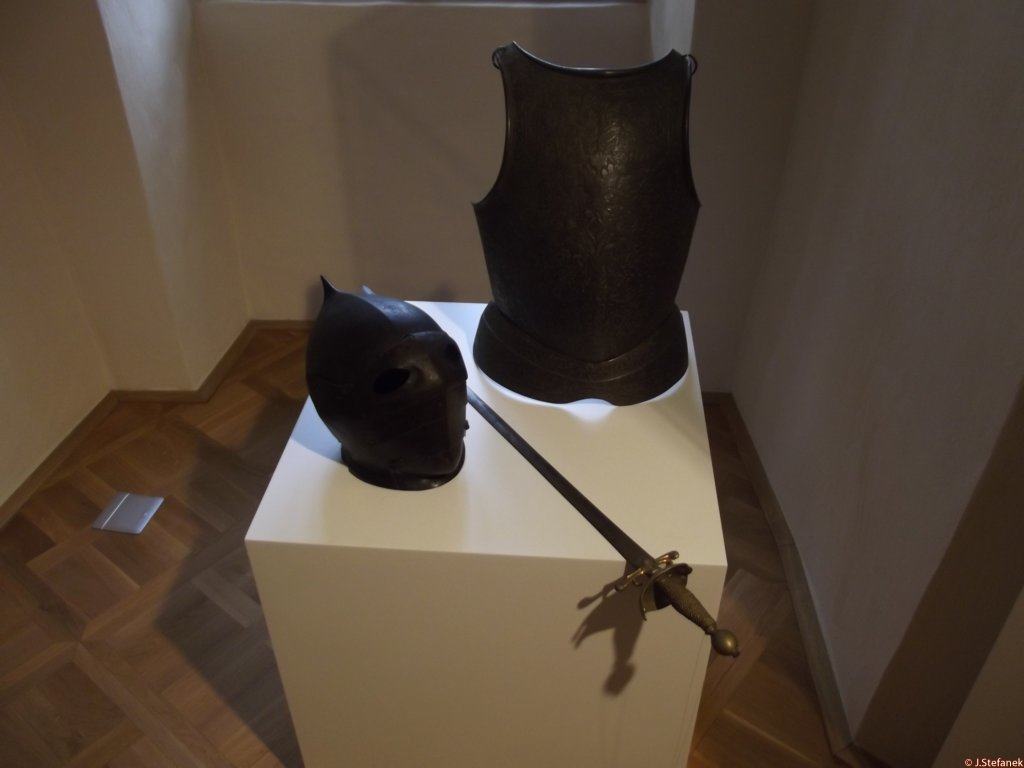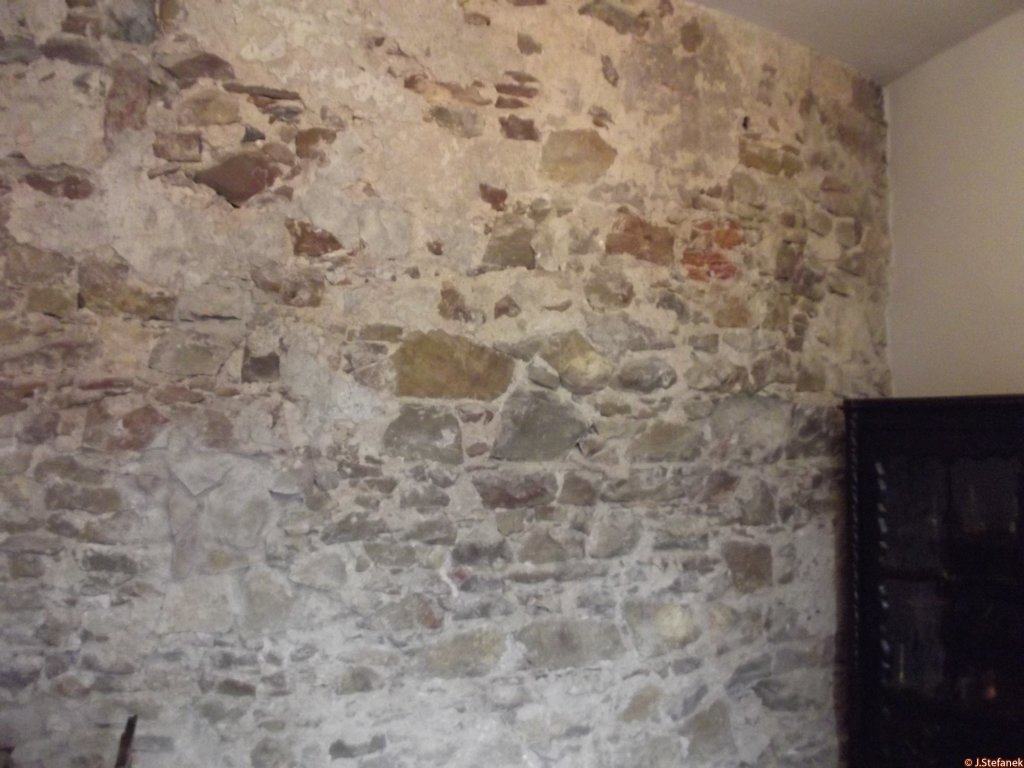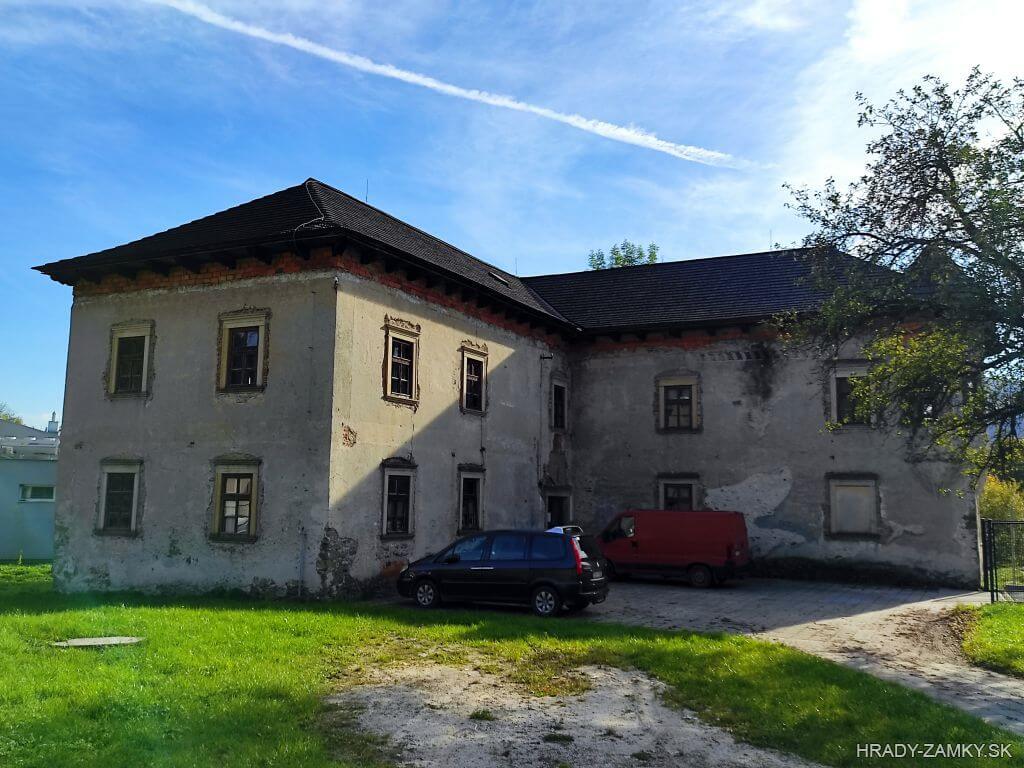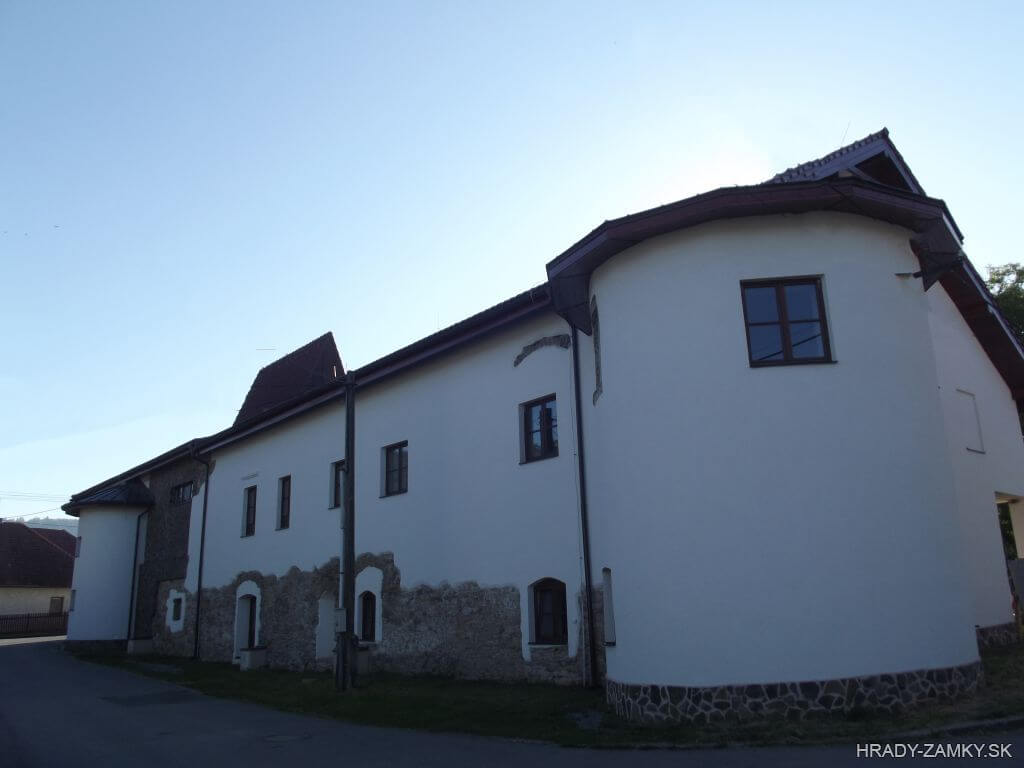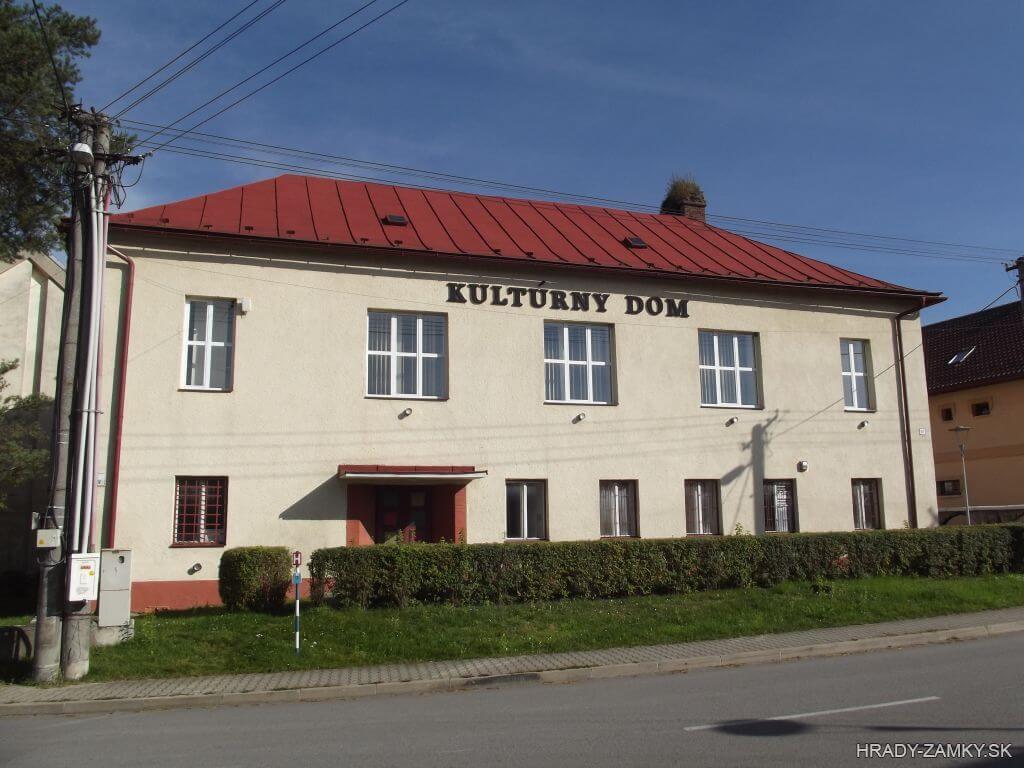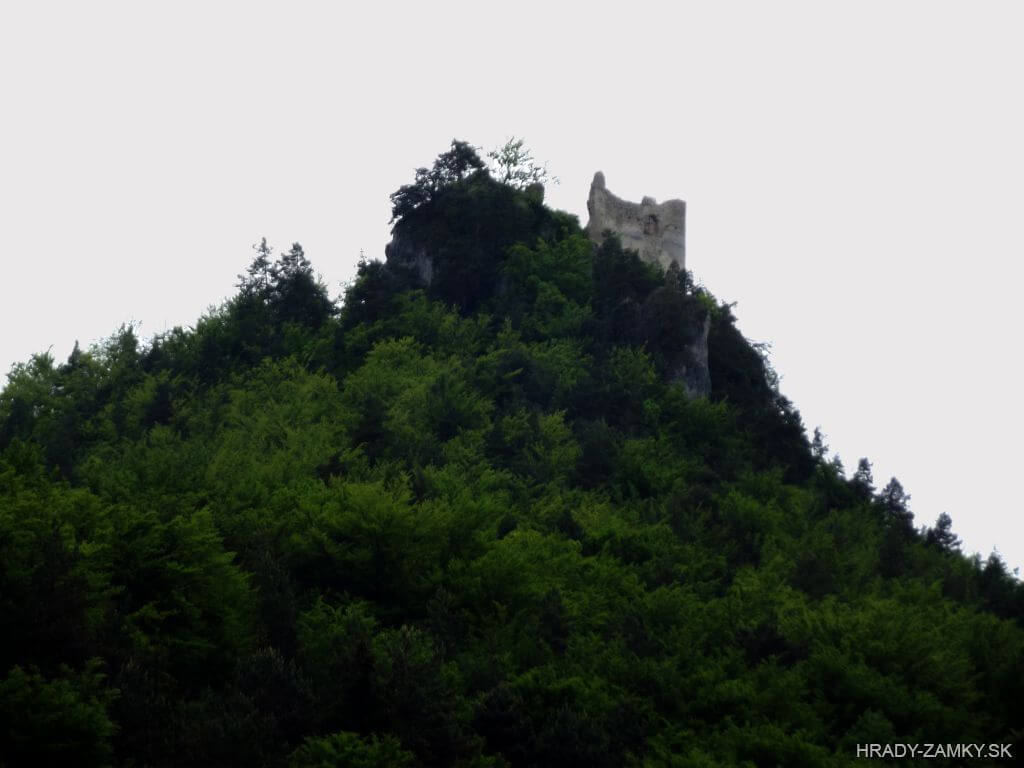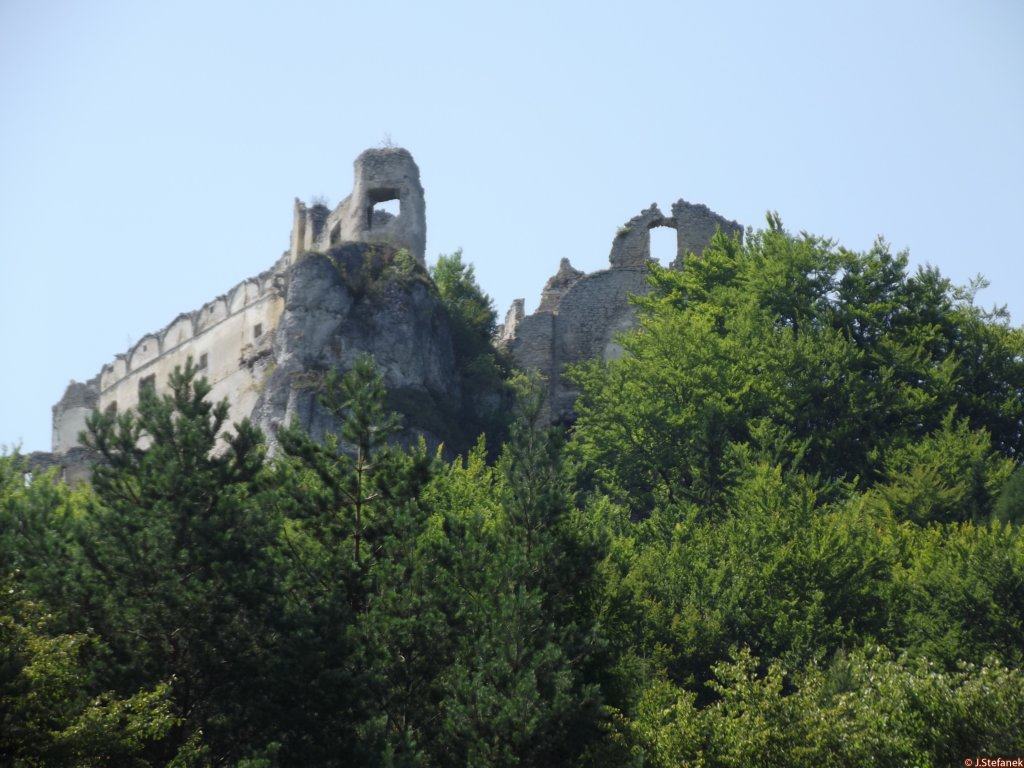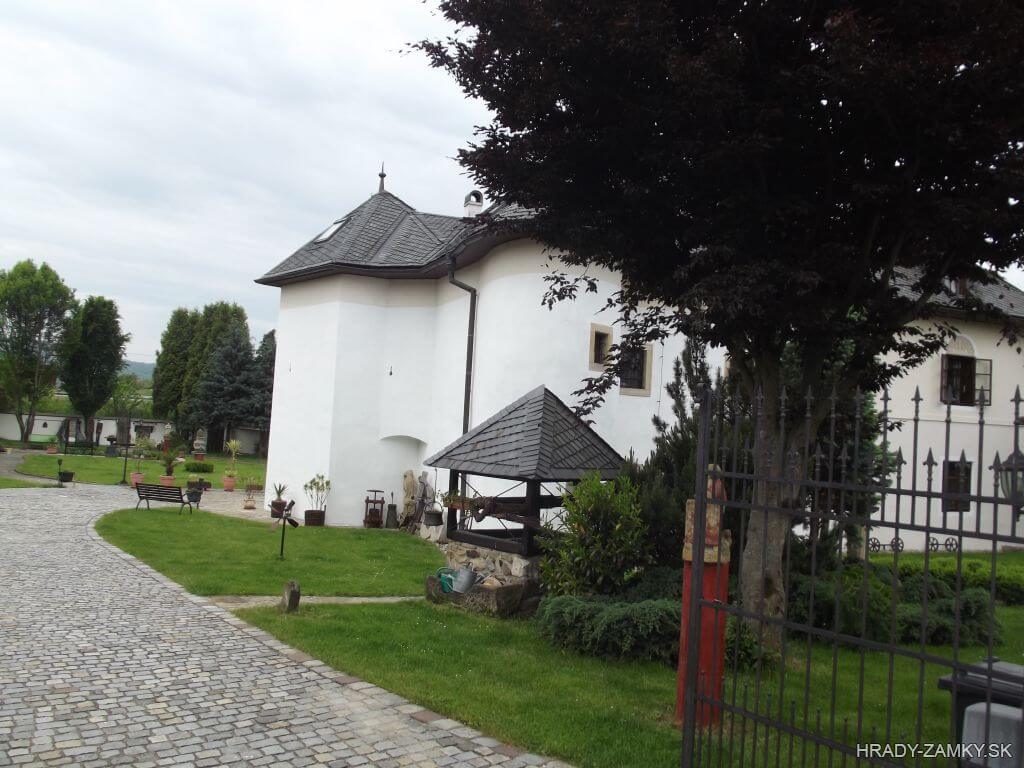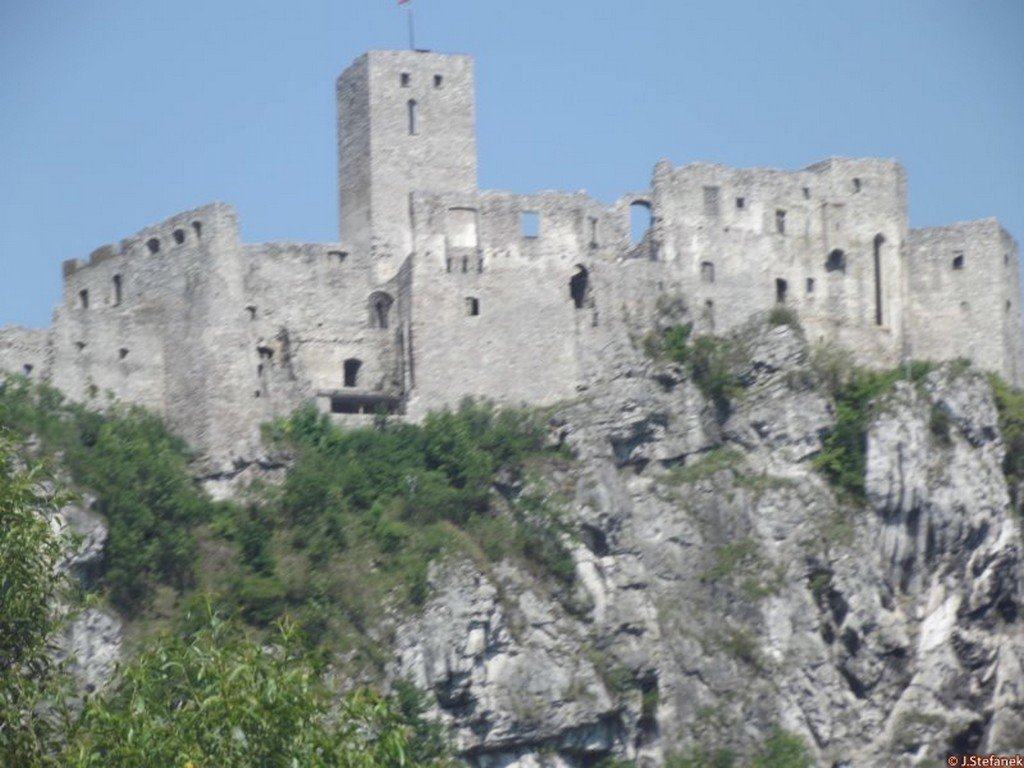Budatín castle
Žilina Žilina county Slovakia
castle, chateau
Budatínsky zámok
Žilina Žilinský kraj Slovakia
hrad, zámok
Originally a lowland castle, later rebuilt and modified building in the Žilina basin, at the confluence of the Kysuce and Váh rivers, in the urban area of Žilina - part of Budatin
Pôvodne nížinný hrad, neskôr prestavaný a upravený objekt v Žilinskej kotline, pri sútoku riek Kysuce a Váh, v intraviláne mesta Žilina - časť Budatín
Previous names
castrum Budetyn, turris Budetyn, fortalicium sive Budetin
Roads
Budatín castle is located in the same named district of Zilina - Budatin. Immediately after the bridge over Kysuca it is necessary to turn to Budatín - Na starej hradskej street, after which we will continue until we reach the turn to K múzeu street. At the end of this street, where it crosses Záhradnícka Street, there is a larger parking lot right in front of the entrance to the castle area.
Zámok Budatín sa nachádza v rovnomennej mestskej časti Žiliny - Budatíne. Hneď za mostom ponad Kysucou je potrebné odbočiť na Budatín - ulicu Na starej hradskej, po ktorej pokračujeme ďalej až prídeme k odbočke na ulicu K múzeu. Na konci tejto uličky, kde ju križuje Záhradnícka ulica, je väčšie parkovisko priamo pred vstupom do areálu.
Description
To the oldest buildings of the castle belongs the original cylindrical tower and the eastern palace, which together with the wall enclose the inner courtyard. The tower adjoins the northern residential wing, the western wing and the loggia in the south. On the SW is a romantic extension, in front of which is a terrace on the site of a collapsed Baroque-Classicist building. From the north, there are economic wings and a Baroque chapel built on the site of the defensive bastion.The chateau is now the seat of the Považské Museum. In the rooms there were preserved wooden wall cladding and carved beamed ceilings, cross vaults and vaults with lunettes. Interesting is the exhibition of tinkering art. Budatin Castle after reconstruction, opened since 2016, offers also a tour of the 3rd floor and tower. On each floor there is an exposition linked to the history of the castle, an exposition of historical maps, a picture gallery, an exposition of clocks and a tour complete with a view of the city of Žilina and its surroundings.
Medzi najstaršie stavby zámku patrí pôvodná valcová veža a východný palác, ktoré spolu s hradbou uzatvárajú vnútorné nádvorie. K veži prilieha severné obytné krídlo, západný trakt a na juhu pristavaná lodžia. Na JZ je romantická prístavba, pred ktorou je terasa na mieste zrúteného barokovo-klasicistického objektu. Zo severu uzatvárajú predhradie hospodárske krídla a baroková kaplnka, postavená na mieste obranného bastiónu.Zámok je v súčasnosti sídlom Považského múzea. V miestnostiach sa zachovalo drevené obloženie stien a vyrezávané trámové stropy, krížové klenby a valené klenby s lunetami. Zaujímavá je expozícia drotárskeho umenia. Budatínsky hrad po rekonštrukcii sprístupnený od r.2016 ponúka prehliadku 3. nadzemného podlažia a veže. Na jednotlivých podlažiach je sprístupnená expozícia viažuca sa k dejinám hradu, expozícia historických máp, obrazáreň, expozícia hodín a prehliadka je zavŕšená vyhliadkou na mesto Žilina a okolie.
Plan
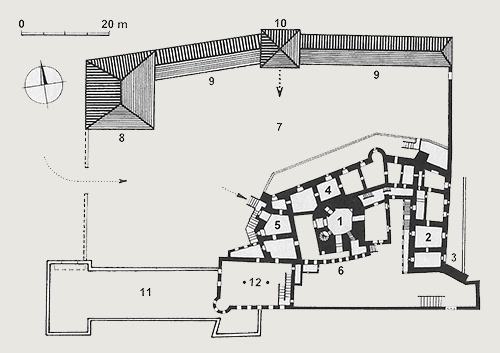
Legend to the ground plan
- 1 - cylindrical tower
- 2 - east palace
- 3 - former entrance to the castle
- 4 - north palace
- 5 - west wing
- 6 - connecting loggia
- 7 - fortification
- 8 - baroque chapel
- 9 - outbuildings
- 10 - fortification gate
- 11 - terrace
- 12 - romantically built building
Legenda k pôdorysu
- 1 - valcová veža
- 2 - východný palác
- 3 - bývalý vstup do hradu
- 4 - severný palác
- 5 - západné krídlo
- 6 - spojovacia loggia
- 7 - predhradie
- 8 - baroková kaplnka
- 9 - hospodárske budovy
- 10 - brána predhradia
- 11 - terasa
- 12 - romanticky postavená budova
History
A characteristic element of the oldest medieval castle is a cylindrical tower, which was built in the second half of the 13th century and probably served as a toll booth. Historians believe that the castle tower was built by the ancestors of the Balassians. This is also indicated by the efforts of Petr and Juraj Balassov, who, after the death of Matúš Čák, demanded her return after the illegal occupation by the oligarch. The first written mention of the castle as the Budetyn castrum dates from this period (1321). In 1336, the castellan Elijah worked here. Sometime during this period, the castle was surrounded by a wall and a moat on the outside of the fortifications. However, the wall collapsed in the second half of the 15th century due to a bad foundation in an artificial embankment.
The castle belonged to the king until 1436, when Sigismund of Luxembourg donated the manor to Juraj of Hatný. After Juraj's death, the owner of the manor was his brother Rafael. After Raphael's death, his widow Elizabeth married Gašpar Szunyog, and since Gašpar was a supporter of King Matej Korvín, he donated the castle to him as a reward. In the second half of the 15th, or at the beginning of the 16th century, under the leadership of the Szunyog family, the castle underwent extensive reconstruction. At that time, a new wall and a new moat were built, which surrounded a much larger castle complex. In 1528, the castle was seized by the Kostkovci brothers in the service of King Ján Zápoľský. The Podmanický brothers opposed them and 6 years later they took over the castle. In 1545 the castle was again handed over to the son of Moses Szunyog. In the first half of the 17th century, they fortified the fortifications in the north and west with bastions, but even this fortification did not prevent the conquest of Thököly Castle by insurgents in 1684. Later, in 1742, Anton Szunyog transformed the northwestern bastion into a Baroque chapel and had a castle building built.
In 1798, after the death of Ján Szunyog, Anton's son, the county Csáky family acquired the seat. The descendant of the Ladislav Csáky family, however, joined the revolution and in 1849 his castle was conquered and burned by the imperial army. Probably the most serious reconstructions took place in 1920-1923 by the last and childless owner Gejz Csáky. The buildings restored in the spirit of Romanticism gave Budatín Castle its present appearance. The Csáky family owned Budatín until 1945. From 1956, its premises became part of the Považský Museum.
In 2006 and 2007, archaeological research was carried out at the castle.
Charakteristickým prvkom najstaršieho stredovekého hradu je valcovitá veža, ktorú postavili v 2.polovici 13. storočia a pravdepodobne slúžila ako mýtnica. Historici sa domnievajú, že hradnú vežu vybudovali predkovia Balassovcov. Naznačuje to aj úsilie Petra a Juraja Balassovcov, ktorí sa po smrti Matúša Čáka domáhali jej vrátenia po protiprávnom obsadení oligarchom. Z tohto obdobia (1321) pochádza aj prvá písomná zmienka, ktorá hrad spomína ako castrum Budetyn. V r.1336 tu pôsobil kastelán Eliáš. Niekedy v tomto období bol hrad obohnaný hradbou a vodnou priekopou na vonkajšej strane opevnenia. Hradba sa však v dôsledku zlého založenia do umelého násypu asi v 2. polovici 15. storočia zrútila.
Hrad patril kráľovi až do r.1436, keď Žigmund Luxemburský daroval panstvo Jurajovi z Hatného. Po Jurajovej smrti bol majiteľom panstva jeho brat Rafael. Po Rafaelovej smrti sa jeho vdova Alžbeta vydala za Gašpara Szunyoga a keďže Gašpar bol stúpencom kráľa Mateja Korvína, ten mu hrad za odmenu daroval. V 2. polovici 15., respektíve začiatkom 16. storočia pod vedením Szunyogovcov hrad prešiel rozsiahlou rekonštrukciou. V tom čase bola vybudovaná nová hradba a nová vodná priekopa, ktoré obkolesovali oveľa väčší hradný komplex. V r.1528 sa hradu zmocnili bratia Kostkovci v službách kráľa Jána Zápoľského. Proti nim vystúpili bratia Podmanický a o 6 rokov neskôr hrad prevzali oni. V r.1545 hrad opäť vydali synom Mojžiša Szunyoga. V prvej polovici 17. storočia opevnili predhradie na severe a západe bastiónmi, avšak ani toto opevnenie nezabránilo v r.1684 dobytiu hradu Thökölyho povstalcami. Neskôr, v r.1742 Anton Szunyog premenil severozápadný bastión na barokovú kaplnku a dal vystavať zámockú budovu.
V r.1798, po smrti Jána Szunyoga, Antonovho syna, získal sídlo grófsky rod Csákyovcov. Potomok rodu Ladislav Csáky sa však zapojil do revolúcie a v r.1849 jeho hrad dobylo a vypálilo cisárske vojsko. K zrejme najzávažnejším prestavbám došlo až v r.1920-1923 posledným a bezdetným majiteľom Gejzom Csákym. Staviská obnovené v duchu romantizmu dali Budatínskemu zámku jeho dnešnú podobu. Csákyovci Budatín vlastnili až do roku 1945. Od roku 1956 sa jeho priestory stali súčasťou Považského múzea.
V rokoch 2006 a 2007 na hrade prebiehal archeologický výskum.
Myths and legends
There are no myths available.
Povráva sa
Z loggie na prvom poschodí vidieť v plášti veže hranolový výklenok. Tu vraj Gašpar Szunyog dal zaživa zamurovať nepočúvnu dcéru Katarínu, ktorá sa vzoprela jeho vôli a odmietla sa vydať za starnúceho pána Jakušiča.
Budatínska mýtnica
Pri sútoku Váhy a Kysuce starý Frgáč so synom vyberali mýto pre žilinských richtárov. Zároveň si plnili vlastné vrecká. Keď mali viac peňazí ako bolo v mestskej truhlici, odkázali do Žiliny, že odteraz budú vyberať poplatky iba pre seba. Začali si stavať vlastnú mýtnicu v podobe veže. Pre bezpečnosť stavby zamurovali do jej základov dieťa, no zabudli si dať vysvätiť kamene, a tak sa im práca nedarila. Čo cez deň zbudovali, do rána bolo rozmetané. Keď Žilinčania videli, že Frgáčom ani duchovia neprajú, ich mýtnicu obsadili a vežu dostavali pre seba.
Useful information
Opening hours and admission
Otváracia doba a vstupné
External links
Nearby castles
